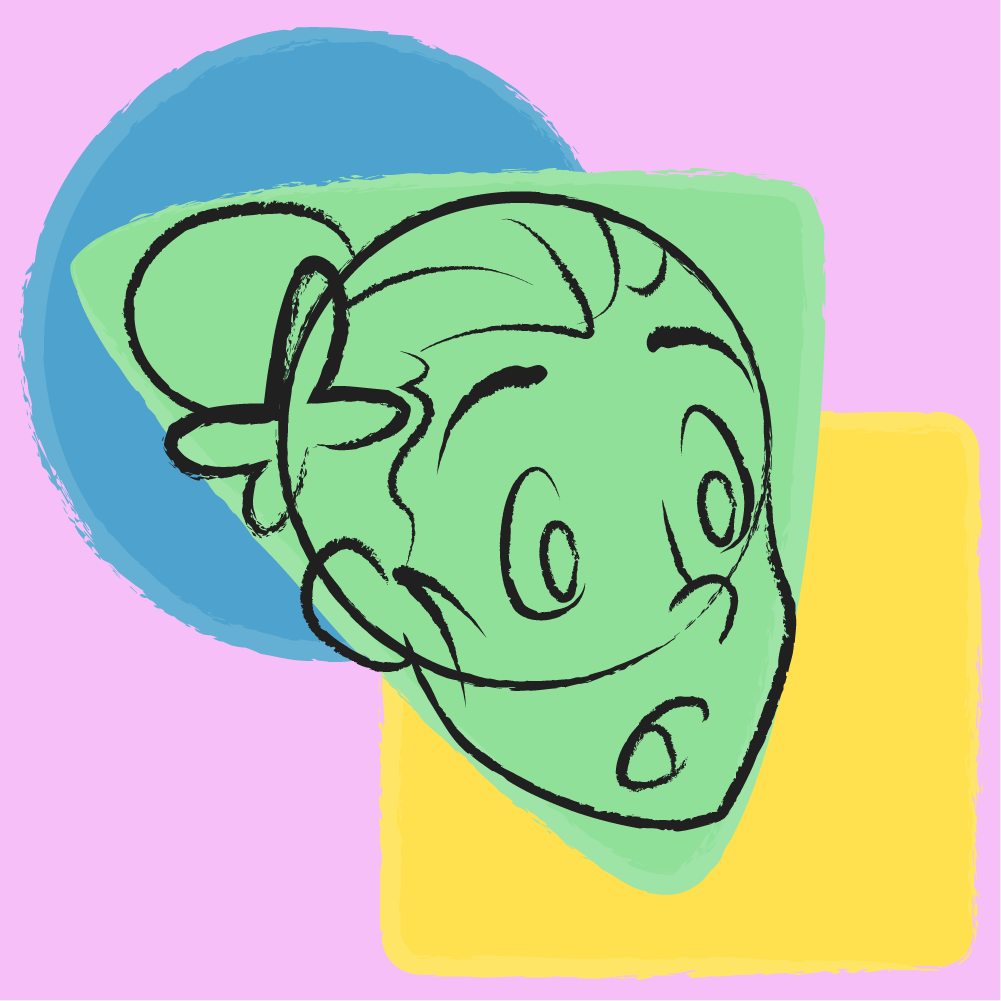Summary
In this lesson, students will design characters from shapes. After starting their designs, they will view videos from two professional artists on completing this exercise and iteration in character design. Once students have refined their characters, they will trade with other students who will offer suggestions. Finally, students will create a finished character and reflect on the lesson using Chat Stations.
Essential Question(s)
How does shape inform character design?
Snapshot
Engage
Students draw 3 shapes and color each with one solid color.
Explore
Students write a Preflection, turn their shapes into characters and watch a short video.
Explain
Students watch a video from a character artist and find its Point of Most Significance. Afterward they will "Pass the Problem" to another student who will help them with their designs.
Extend
Students will use feedback from the previous step and further develop their character through the use of accessories.
Evaluate
Students will finish their Preflection writing and then navigate Chat Stations help them evaluate their experience.
Materials
Pencils
A medium with which to color (such as markers, pastels, etc.)
Blank drawing paper
Projector
Speakers
Engage
5 Minute(s)
Display slide 3 and provide each student with a piece of copy paper as well as art supplies such as markers, pens, pencils or pastels. Tell students to draw three different, contrasting shapes and fill each one with a solid, contrasting color. Start the timer on slide 3 and provide five minutes for students to complete the task.
Explore
20 Minute(s)
Move through slides 4-5 and review the essential question and lesson objective with students. Move to slide 6 and have students take out a piece of notebook paper. Using the Preflection strategy, tell students to write a response to the essential question, how does shape inform character design? Ask for volunteers to share their thoughts about the question. When they have finished, collect their papers for later use during the lesson.
Move to slide 7 and instruct students to return to their drawings and now turn each of the drawn shapes into a different character. Suggest that they try to use the shapes in inventive ways. Are they faces? Bodies? Are they human-like? Creatures? Students are free to alter the proportions of the shape or the shade of the color, but each change should be drawn next to the previous version so one can see how the character evolves. Tell students they have five minutes to turn their shapes into characters and begin the timer on slide 7.
After five minutes, display slide 8 and show a short video that provides an example of turning shapes into different characters.
Display slide 9. Start the timer and tell students they have ten minutes to finish turning their shapes into characters.
Explain
25 Minute(s)
Display slide 12 and have students watch the video.
After showing the video, move to slide 13 and ask students to think about the POMS: Point of Most Significance from the video, tell students to share their thoughts with a partner and then ask for volunteers to share their thoughts.
Display slide 14 and instruct students to do a variation of the Pass the Problem strategy. Instruct students to make a new iteration of one of their characters, then have them exchange their artwork with another student. Each student will now draw a version of the character before them based upon the latest iteration with adding a few lines of design feedback underneath. Instruct them to consider changing elements like texture, line thickness, shade, etc. Should they choose, they can also change the primary color used for the characters if they think there is a better option.
Have students exchange their papers back and refine their character in another iteration using the new feedback from their peers. Each student needs to make one more iteration using that feedback. They don't have to keep it in their final product, but it might give the student another perspective.
Extend
10 Minute(s)
Display slide 15. Tell students to add an accessory to each character in a different color (they can also change the color of their characters to better suit the accessory). The accessory should tell something else about the character. Remind students about the video on iteration and how each small change to the face greatly informed the final tone and expression of the character. How could a piece of clothing, jewelry, or held item do the same? Display slides 16 and 17 to provide examples for students of what the process of modifying their characters could look like.
(Optional) 2nd Extend - ICAP
15 Minute(s)
Have students navigate to the Mentimeter using your link and code. As they watch the video, have them write down ideas that they find interesting.
Evaluate
20 Minute(s)
Display slide 18. Distribute students' Preflections responses from earlier in the lesson and have the students answer the essential question again now that they have practiced making characters from shapes. Ask for students to share their thoughts.
Move to slide 19. Pass out the attached Chat Stations Questions handout to each student. Have students pair with their previous partner and have them combine with another pair to make groups of four.
Tell students to visit each of the Chat Stations as a group and answer the question on each poster.
What did you learn from this experience?
Did starting from such basic components hinder or hurt your creativity? Why or why not?
Did this change your perception of any popular character from a media franchise with which you are familiar?
Resources
K20 Center. (n.d). Chat Stations. Strategies. https://learn.k20center.ou.edu/strategy/944
K20 Center. (n.d.) Pass the Problem. Strategies. https://learn.k20center.ou.edu/strategy/151
K20 Center. (n.d.) POMS: Point of Most Significance. Strategies. https://learn.k20center.ou.edu/strategy/101
K20 Center. (n.d.). Preflections. Strategies. https://learn.k20center.ou.edu/strategy/191
YouTube. (2021, August 5). Drawing shapes into faces! YouTube. Retrieved June 7, 2022, from https://www.youtube.com/watch?v=FQd3h9tTMvk
YouTube. (2021, June 6). Iteration: An essential character design tool! YouTube. Retrieved June 7, 2022, from https://www.youtube.com/watch?v=KCF0-PBtHAA


